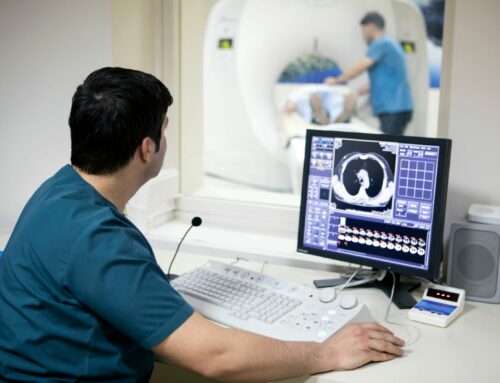By Ben Scully, president at Avatara |
There are many misconceptions about healthcare technology, but you can improve your organization’s approach to IT by clearing them up and following these three steps.

Healthcare technology is everywhere. Despite its widespread adoption, however, significant misconceptions have surfaced.
One such misbelief relates to how advanced healthcare organizations are when it comes to cybersecurity. Many organizations are actually behind. Despite pressure from regulatory agencies, healthcare doesn’t routinely conduct IT audits, and departments are not held accountable.
Another misconception is that small healthcare practices aren’t susceptible to data breaches. The reality is that cybercriminals attack large and small operations if there is an exploitable security gap. For that reason, every healthcare organization requires high-quality, updated cybersecurity systems.
Many also mistakenly assume that telemedicine’s popularity will fade once the pandemic does. But telemedicine is here to stay, and experts predict it will be a $184.5 billion market by 2028. Effective telemedicine requires a comprehensive approach, mainly because HIPAA compliance regulations are tightening after the pandemic’s more lenient early days.
Finally, there is the misguided notion that artificial intelligence in healthcare will reduce personal interactions between patients and providers. In actuality, AI can increase personal connections. It also offloads work so providers can avoid burnout, which we know is a real and detrimental outcome.
Healthcare technology is continually evolving. The sooner these misconceptions are cleared up, the more proactive you can be about shaping a relevant IT infrastructure at your organization.
How Misconceptions Influence Healthcare’s Approach to IT
Without proper clarification, misconceptions can adversely impact healthcare organizations’ IT mindsets in a few ways.
For example, a less urgent cybersecurity approach can lead an organization to neglect a comprehensive and continually evolving cybersecurity strategy. Without that, data loss from breaches can cause severe harm to organizations (e.g., reputation damage, liability for stolen customer data, compliance violations, and hefty fines).
Without an engaging and secure telehealth solution that provides a positive patient experience, you also risk losing patients, revenue, and maybe even your whole practice. But with a comprehensive IT platform that delights your patients, your bottom line benefits.
Likewise, failure to embrace new technologies like AI because of fear or ignorance guarantees your organization will squander sizable opportunities for growth and better patient outcomes.
Here are three ways to boost your healthcare organization’s IT approach:
1. Make employee cybersecurity training a company requirement.
Although cybersecurity seems to be all about cutting-edge technology, one of the most significant vulnerabilities is employee error. According to one study, 88% of data breaches were human-based, often due to the negligence of younger employees.
For that reason, it’s critical to conduct regular cybersecurity awareness training sessions. These programs educate your staff on issues such as phishing attacks and security best practices, including creating strong passwords, using two-factor authentication, and having the appropriate level of distrust regarding critical digital resources.
2. Use telehealth to monitor patient satisfaction.
Given that telehealth is becoming a prominent component of healthcare delivery, you simply cannot afford to ignore it. To get the most value from your efforts, regularly follow up on your patients’ satisfaction with your service.
That’s even more important given the findings of J.D. Power’s “2021 Telehealth Satisfaction Study.” The 4,600-person study concluded that although telehealth adoption increased 36% from the previous year, many respondents reported dissatisfaction with the services. Issues included a lack of clarity regarding costs or details about providers and confusing technology.
3. Embrace AI.
Use AI to its full potential. It can revolutionize your healthcare operation, bringing it into a whole new era of productivity, quality care, and increased revenue.
Keep in mind that whether you decide to make this leap or not, your peers already are. It’s a quickly growing facet of healthcare currently being used to help provide remote diabetes care, interpret X-ray scans, improve data analysis and diagnoses, and more.
Fortunately, it’s not hard to overcome misconceptions and embrace how IT can be a great boon to healthcare. It just starts with creating a culture of awareness and acceptance of the best practices. After that, it’s a matter of finding a good fit with vendors who offer high-quality IT solutions for healthcare. Auditing your entire IT infrastructure can be daunting, but it is critical. By breaking it down into focused steps, you will set your organization and your patients up for a rewarding future.
About The Author
 Ben Scully is the president of Avatara, a St. Louis, Missouri-based company founded in 2005 that aims to help organizations solve complex, long-standing issues within their IT infrastructures.
Ben Scully is the president of Avatara, a St. Louis, Missouri-based company founded in 2005 that aims to help organizations solve complex, long-standing issues within their IT infrastructures.












